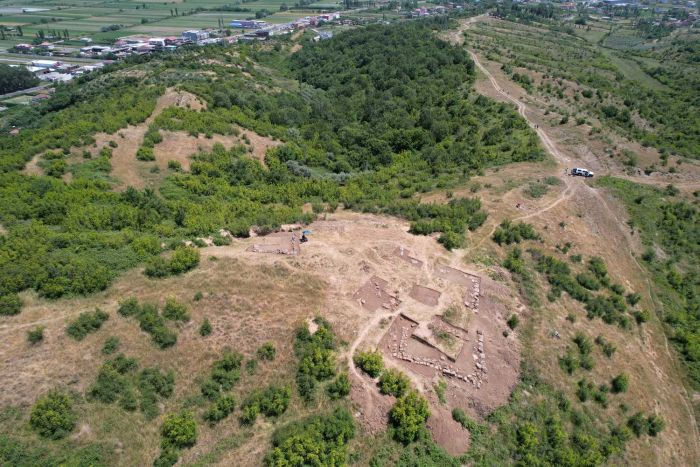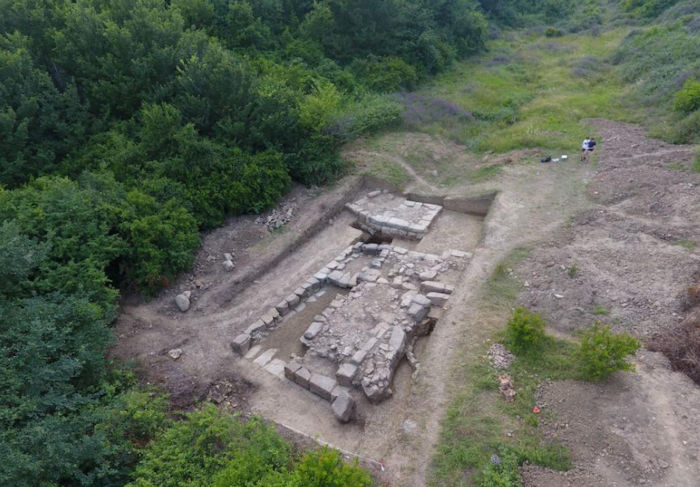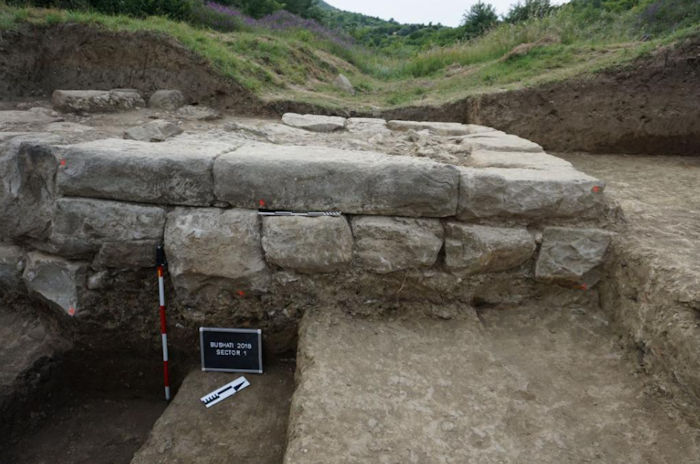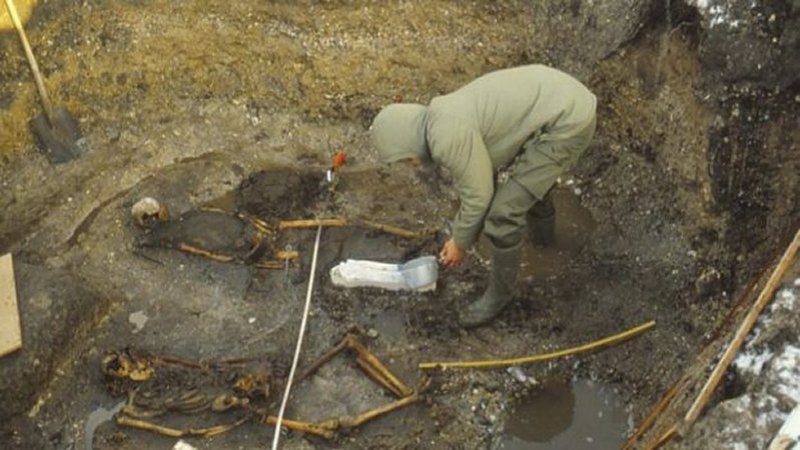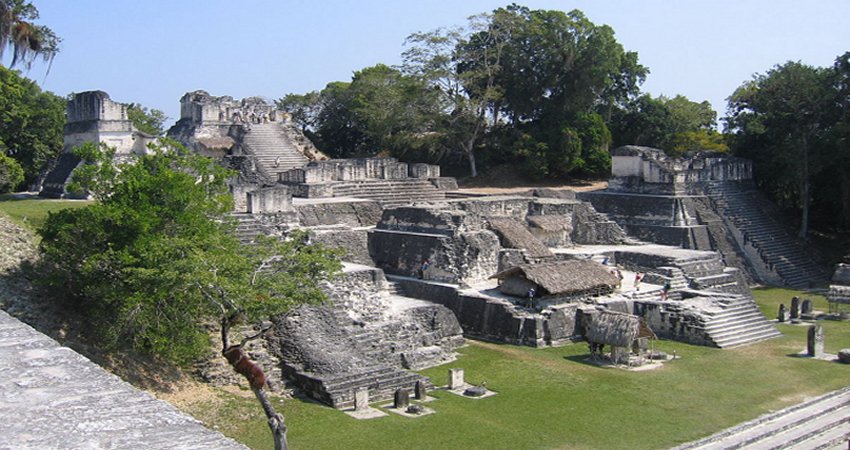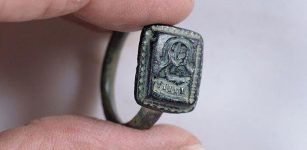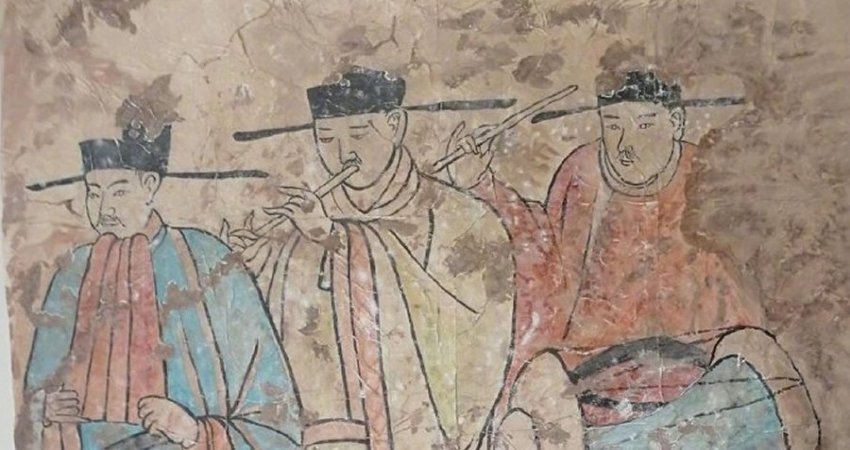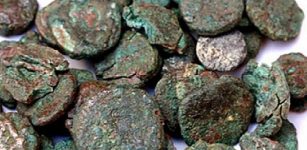2,000-Year-Old Lost City Of Bassania Described By Roman Historian Livy Investigated By Archaeologists
Conny Waters – MessageToEagle.com – Chances the ancient city of Bassania will ever be found have not been high. At the beginning of the 1st century A.D. and the end of the reign of Emperor Octavian Augustus the city of Bassania was abandoned or destroyed during the Roman invasion. “Its name could have been forgotten,” scientists say.
The hill next to the village of Bushat during archaeological research. Credit: M. Lemke
However, archaeology has demonstrated on several occasions lost cities can be found. In 2018 scientists carried out geophysical surveys, and discovered unexpectedly a lost, ancient city in northwestern Albania near the village of Shkodra near thevillage of Bushat took place. Then the first excavations began.
According to a recent announcement by PAP, the head of research, Professor Piotr Dyczek, director of the Antiquity of Southeastern Europe Research Center of the University of Warsaw, this year the highest part of the city has been excavated, just below the top of the mountain around which its remains are located. On the Albanian side, the research was led by Dr. Saimir Shpuza from the Institute of Archeology in Tirana.
“During our work in May this year, we unveiled the foundations of two large buildings here”, Professor Dyczek added.
The site selected for the excavation was not accidental, because geophysical surveys conducted back in 2018 within the hill made it possible to look under the ground without the need for physical intervention. Scientists’ attention was drawn to structures that resembled solid walls.
During the works in this place, the remains of the entire large structure were excavated, with an area of almost 20 m by almost 12 m. Next to it, there was a house of a similar size, and a little further, a little smaller, 10 m by 7 m.
Credit: M. Lemke
“The city was abandoned – no traces of its violent end in the form of destruction and burning have survived. After leaving it for the last 2 thousand. it was eroding for years and its walls were sliding down the slopes “- described the head of the research. It also served as a local quarry – many of the surrounding houses have large, cut blocks from the archaeological site built in.
Despite erosion and human activity in the ancient city, archaeologists were fortunate enough to find fragments of ancient pottery vessels. Thanks to their analysis, it was established that the hill was inhabited as early as the 2nd millennium BC, and it was probably abandoned at the turn of the era or a little later.
In the buildings, fragments of amphorae, mainly from Italy and dated to the 3rd and 2nd century BC, and skyphoses, i.e. Greek wine drinking vessels with horizontal handles, were discovered.
“Most of them are very small. Such miniature dishes in antiquity were either toys or votive offerings. Currently, it is difficult to say what functions they performed in our position, ”said Professor Dyczek.
Credit: M. Lemke
So far, scientists are not able to state the function of the buildings discovered by them. However, they feel that they are unlike any others in the area, which makes them difficult to identify. However, they were exposed on the hill, so they had to have a prestigious character.
As the research leader pointed out, these buildings had solid foundations, 90 cm wide. Local raw material was used – conglomerate. Mortar was not used. The roofs were covered with roof tiles specially profiled in the Greek style.
Credit: M. Lemke
“So they were not ordinary houses, moreover, they are in a dominant position in the city. You can make various guesses, but you have to wait for the results of further research”, he added.
All the data show that the discovered buildings come from Hellenistic times, from the end of the third and first half of the 19th century. II century BC.
See also: More Archaeology News
In 2018, archaeologists unveiled solid cyclopean defensive walls, two gates with bastions, and fragments of buildings. Scientists estimate that the site covered about 12 hectares. This fortified city was situated between two important ancient centers in the area of former Illyria (now Albania) – the Illyrian capital of Shkoder and the Greek city of Lissos.
It may have been Bassania, but archaeologists are still looking for convincing evidence to support this thesis. The city was described by the Roman historian Livius (59 BC-AD 17) in the context of the struggle of the Roman army with the last king of the Illyrians, Gentios.
Written by Conny Waters – AncientPages.com Staff Writer


